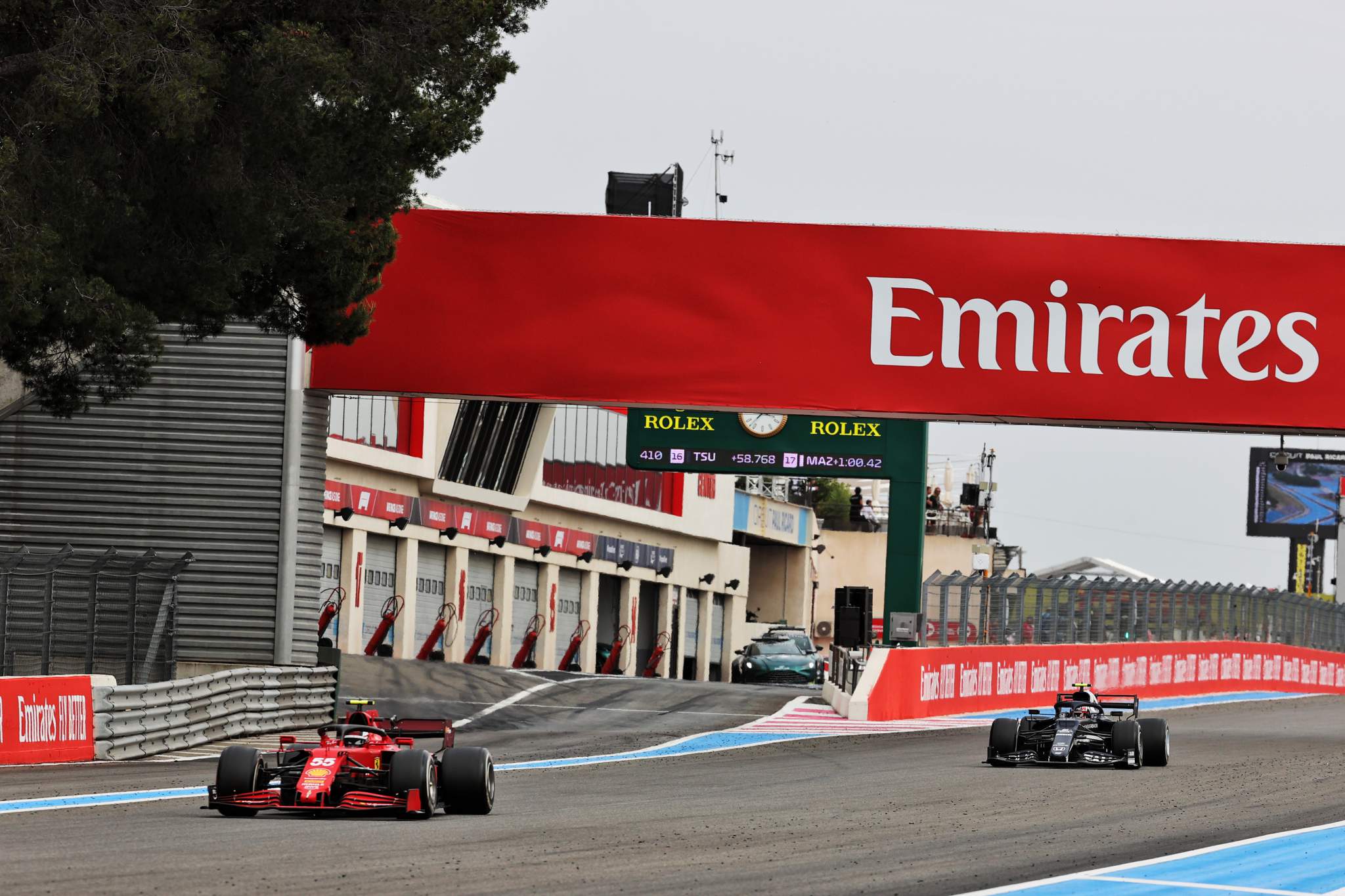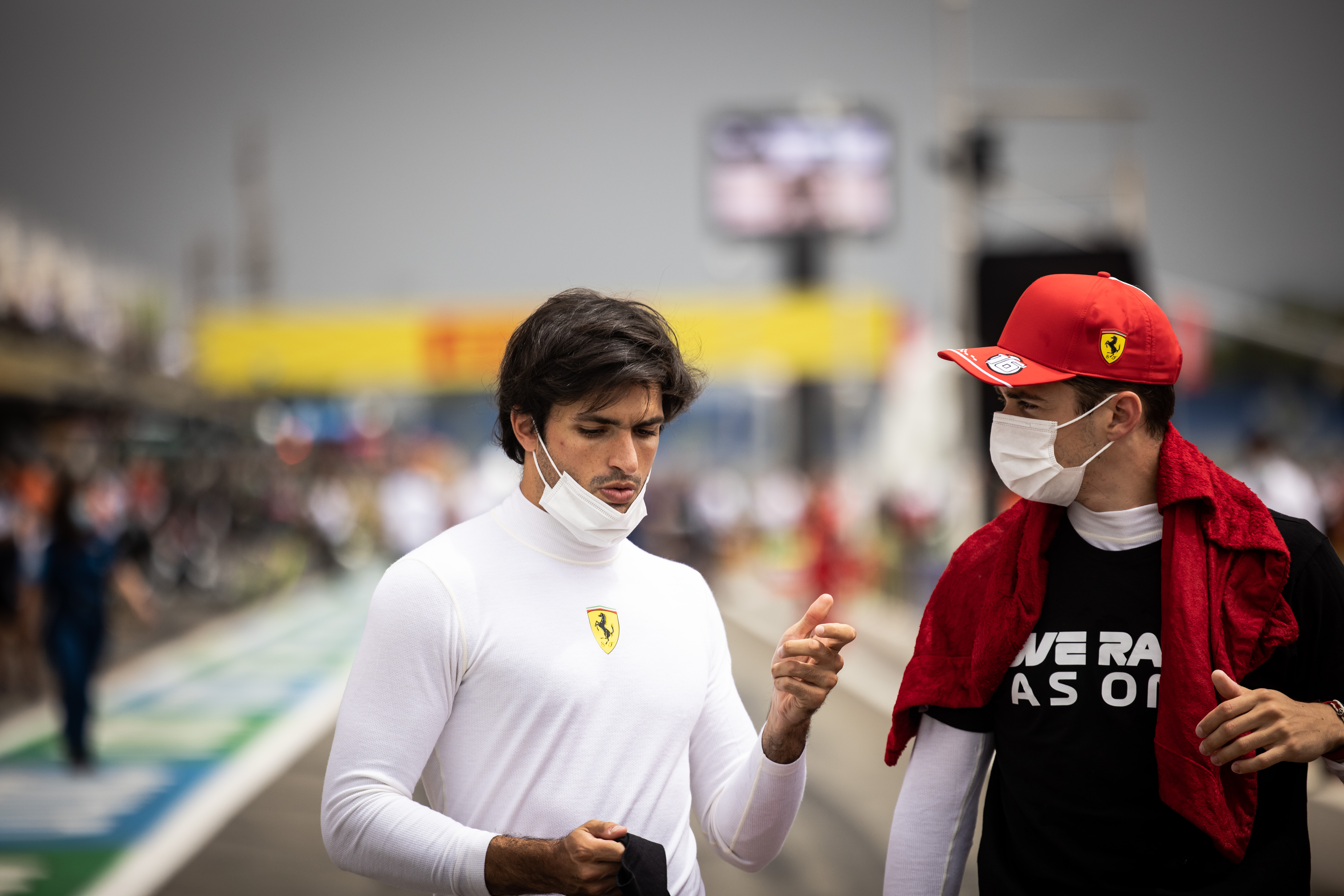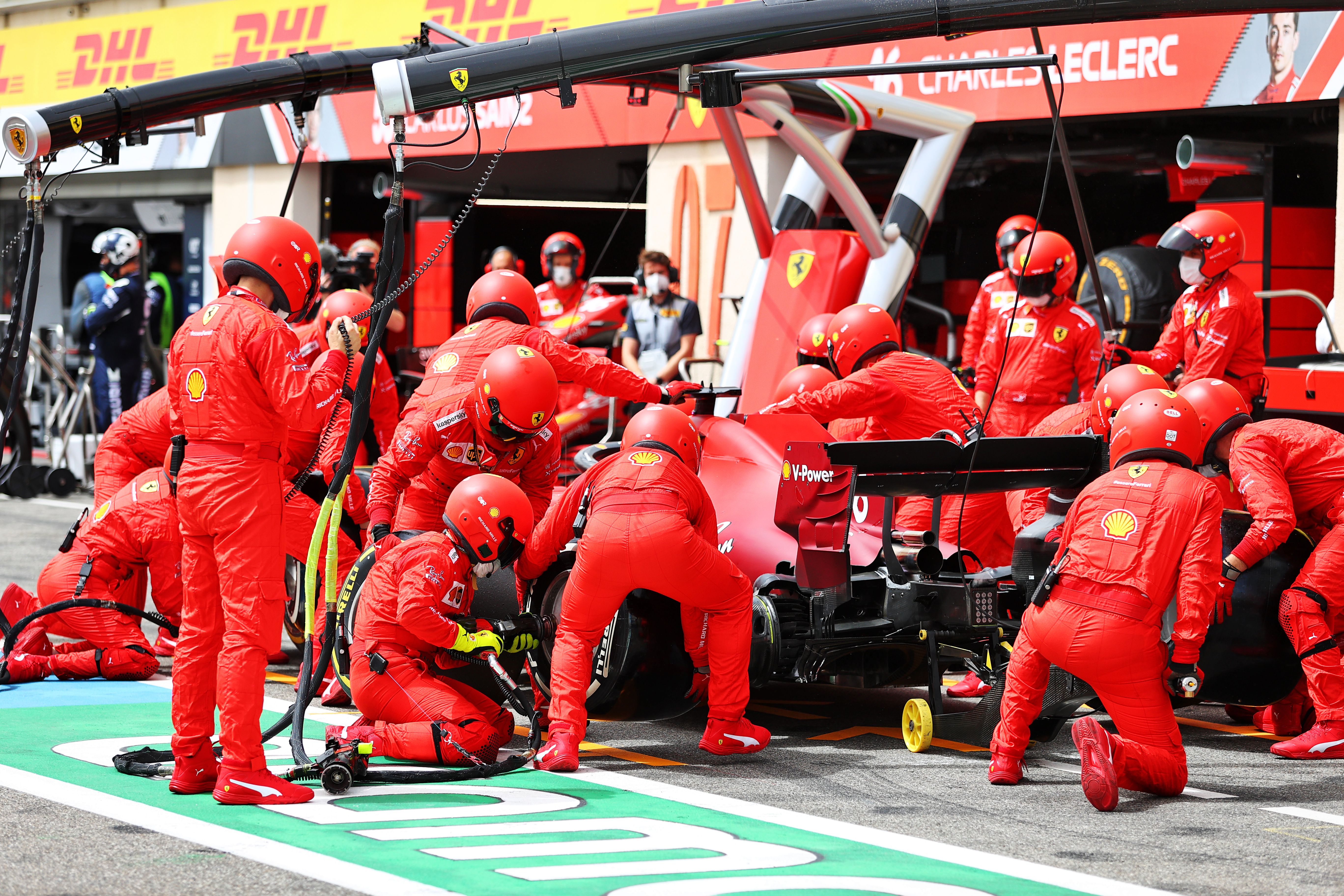Up Next

Ferrari’s weakness with tyre degradation is not a short-term fix and may even need “some hardware changes” to resolve, reckons Formula 1 team boss Mattia Binotto.
Carlos Sainz and Charles Leclerc started fifth and seventh but only finished 11th and 16th in the French Grand Prix to record Ferrari’s first point-less score of the season.
It was the worst result of Leclerc’s Ferrari career and the lowest finish since he was 19th in the third race of his rookie season with Sauber back in 2018.
Ferrari has admitted there is a trend this season of its excellent one-lap pace not translating into the same performance in the race, but the French GP was an extreme manifestation of that.
While the high-speed nature of the Paul Ricard circuit combined with lower-grip conditions than expected on race day likely contributed to increased sliding on the front axle, Ferrari needs to understand why it suffered so much more graining than others in those circumstances.
“No doubt that there is something that we need to learn and to address,” Binotto said.
“[But] not for the near future, certainly for the medium and long-term.”
Ferrari has switched its development focus to the 2022 car, which means anything it may discover about the link between its current design and tyre usage is more likely to be incorporated into next year’s car.

Homologated car parts would likely prevent any physical upgrade this season anyway.
Binotto said: “Can we address it through a simple development on the current car? I think obviously we may improve the situation but to solve it I think we need to have some hardware change, like for example the rims, which is not possible with the regulations.
“It’s more important for us at that stage really to try to understand and to address it definitively for next year.”
That does not mean Ferrari’s analysis cannot help it this season, though.

The two races at the Red Bull Ring that immediately follow the French GP may come too quickly for Ferrari to even apply swift short-term lessons from its struggle last weekend.
But whether it is track-related or down to the conditions, it is realistic to expect this issue to re-occur if untreated and Binotto said Ferrari needs to “prepare ourselves to face such a situation in the future, and at least try to mitigate the problem”.
He said that there was an element of knowing that at Paul Ricard, “whatever is our car characteristics is not a track which is suiting well”, and added that as the last race there was two years ago Ferrari “should have addressed” that problem by now and hasn’t.
That hints a common element within the Ferrari car concept could be to blame if both the 2019 and 2021 cars have suffered a similar struggle.
However, it could simply be that different problems are creating the same consequence.
After the race, Sainz had theorised that the SF21 simply has a narrow window in which it can operate the tyres properly, and used the Spanish GP as an example of where Ferrari found that balance.

When asked by The Race if this could be down to an underlying car trait, Binotto said he did not “have an answer right now” and that Ferrari needed to “analyse all the data, brainstorm and do some simulations” to identify the exact cause.
“Looking at the future, it’s important for us that it’s a lesson learned,” he said.
“We must make sure that this time we take the opportunity and put in effort to solve it.”





